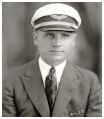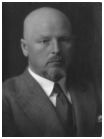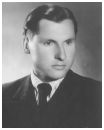Lithuania restored its independence from the Russian Empire and German WW I occupation in 1918. During organizing its armed forces also Air Forces were founded. Many years it was the only kind of aviation in Lithuania, and only a few dozens of Lithuanians aviation officers could be pilots. First who indicated abnormality of such situation was officer of Lithuanian Military Aviation, future Transatlantic pilot Steponas Darius. He was supported by other Lithuanian aviators, and on 1st of May 1927 the group of officers and invited representatives of government, business and famous artists founded Lithuanian Aero Club (Lietuvos Aero Klubas -LAK).
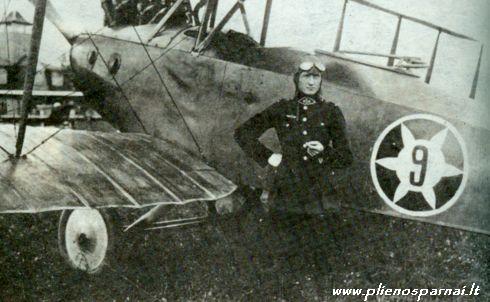
S.Darius by LVG C.VI
The goal of LAK was not only the flying, but also popularization of aviation, informing the general public about aviation and its achievements. In 1928 the first LAK President Gen. S. Žukauskas retired and the new President Prof. Z. Žemaitis was elected. He successfully leaded the activities of LAK until the Soviet occupation of Lithuania and LAK"s liquidation in 1940.

Prof. Z.Žemaitis
LAK expanded its activities from a few aircraft pilots training in the beginning to development of gliding and aeromodelling, organizing aviation promotion days and air shows, publishing of aviation books and periodicals. In some years the sections of LAK in other Lithuanian cities, such as Panevežys, Zarasai, Ukmergė were formed by local enthusiasts.
Pilots" training and competitions
In 1930 the first course of LAK civil pilots finished their training, and later one or two courses per year were prepared.
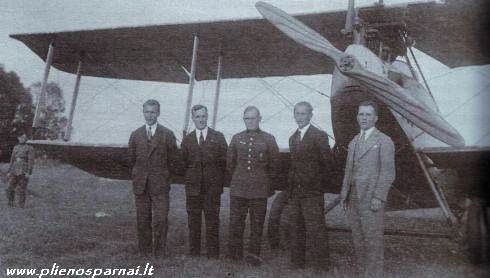
The first civil lithuanian pilots
In January 1935 LAK Sports Squadron was formed of civil pilots and technicians. Since 1936 it was sponsored by Military Aviation, because civil pilots could not afford to pay for 20-40 training flight hours per year.
In 1938 the aircraft and glider pilots" competition was organized. Pilots competed in 300 km air navigation rally and known and free aerobatics.
Aircraft.
In August 1929 Military Aviation donated to LAK the first aircraft -training Albatros B.II. Till 1940 13 more aircraft were acquired: training ANBO-II in August 1931, British sport DH-60G "Gipsy Moth" in 1933, Czech training S.18 in 1934, two training Albatros C.Ib in February 1935, autogiro C-30A in May 1935, four-sitting touristic Caudron Phalene on 17th of March 1936, sport aircraft DH-82 "Tiger Moth" on 12th of May 1936, the second "Tiger Moth" on 18th of April, 1937, Taylor Cub on 24th of October, 1937, aerobatic Bucker 133 "Jungmeister" on 15th of June, 1938, sports Bucker 131 "Jungmann" in April 1939, touristic Farman-393, equipped as ambulance, on 12th of July, 1939.
International relationships.
In 1931 Lithuanian Aero Club was accepted by International Aeronautics Federation - FAI, in 1936 entered the International Gliding Commission ISTUS, which cooperated closely with FAI.
Gliding in Lithuania.
First gliders in Lithuania were built in 1931. The same year military pilot G. Heidrikis was sent to German Rossiten gliding school for training as a glider pilot and instructor.

Pilot G. Heidrikis
Gliders.
In 1932 the Aviation Circle of Kaunas Technical College, supported 1
by LAK, built the first glider designed by B. Oškinis - T-l ("Technikas-1"). Later more than 10 such gliders were produced. Encouraged by LAK B. Oškinis designed many glider types: T-2 in 1934, MO-1, MO-2 and MOG (with G. Miliūnas and A. Gysas) and training glider BrO-3 "Pūkas" ("Down") in 1936, aerobatic glider BrO-4 "Rūta" ("Rue") in 1937, BrO-5 "Rūta II" in 1937. In 1937 LAK ordered two more BrO-3, named "Aras" ("Eagle") and "Giriūnas" ("Woodman"). In July of 1936 in ; Nida the first glider "Uodas" ("Gnat"), designed by A. Paknys, was tested. On 15th of November 1936 two-sitting PAGY of A. Paknys and A. Gysas design made its first flight, in July 1937 - training glider "Nerija" ("Spit of dunes"), on 19th of April, 1938 - training glider "Termikas" ("Thermal") designed by A. Paknys and A. Gysas. In autumn it was fitted with 18 HP engine.
In 1937 a 17-year-old aviamodeller P. Motiekaitis built glider Moti-1 of his own design.
In 1938 B. Karvelis constructed training glider "Vanagas" ("Hawk"), and in 1940 - high class sailplane BK-2.

B. Karvelis in the BK-1 "Vanagas"
In 1931-1940 totally 30 gliders of own construction and 9 by purchased in Germany documentation were built in Lithuania. German types were some R.R.G. "Zogling", two R.R.G. "Falke", two Grunau Baby II, one Go-3 "Minimoa". Two gliders were purchased in Germany - record Mu-13d and two-sitting Go-4, and one from Czechoslovakia - two-sitting "Sedy Vlk".
Training and sport flights of glider pilots.
In 1932 in Pazaislis (near Kaunas) the gliding school was opened. Some first A-class pilots were prepared there. In 1933 Nida Gliding School started its activities. Till March 1939, when the Klaipeda district with Nida was annexed by Germany, Nida Gliding School prepared about 500 qualified glider pilots. Some endurance records were achieved there: on 16 051936 J.Pyragius on "Falke" glider - 22 hours 36 minutes, on 24 06 1936 A. Gysas on "Falke" - 26 hours. These two records were among top five endurance flights in the world.
Distance records: on 05 06 1935 J. Pyragius on "Falke" - route Nida-Palanga, 75 km. J. Pyragius became the first Lithuanian D-class pilot.
In 1937 in Kaunas glider pilots started to use the aircraft towing and thermal flights. B. Oškinis and J. Pyragius participated th&t year with their gliders BrO-4 "Rūta" and Go-3 "Minimoa in the international gliding competition in Elmira (USA).
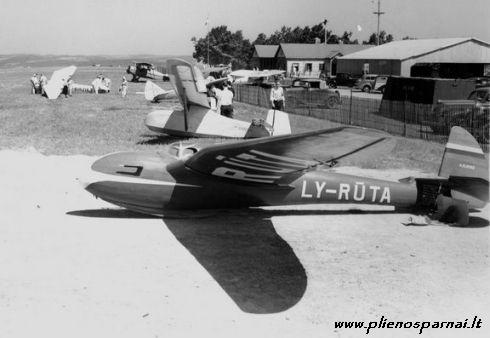
BrO-4 "Rūta" in the Elmira
In the Lithuanian gliding competition in 1938 participated 16 glider pilots. They competed in flight distance, height and endurance. J. Pyragius became the champion, with the new Lithuanian flight distance record -170 km. The team of Lithuanian glider pilots (A. Gysas, B. Oškinis, J. Pyragius) won also international Baltic Air Games in Kaunas in 1939.
Since December 1934 LAK published monthly aviation magazine "Lietuvos sparnai" ("Wings of Lithuania"). In 1939 it became forthnightly.
On 15th of June 1940 an army of 240 Soviet aircraft, 850 tanks, 280 armoured vehicles with 1160 artillery guns and 150,000 soldiers invaded into Lithuania. The life of independent Lithuania was over. All flying activities of Lithuanian civil and military aircraft were forbidden, and this prohibition was revoked only 20 years later.
Source: V.Ašmenskas Lietuvos Aero Klubas 1927-1940 metais
GRĮŽTI Į LAK PAGRINDINĮ








